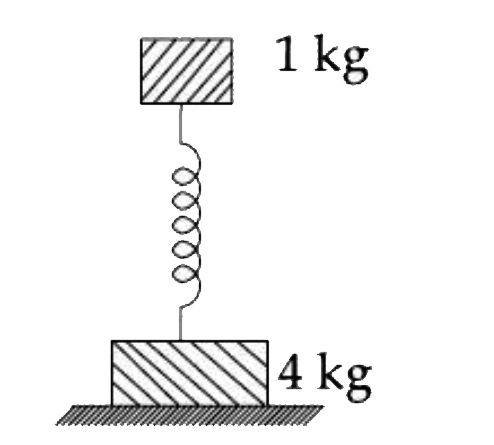Two simple harmonic motions of angular frequency 100rads−1 and 1000rads−1 have the same displacement amplitude. The ratio of their maximum accelerations is
1:104
1:10
1:102
1:103
The correct Answer is:C
Step by step video & image solution for Two simple harmonic motions of angular frequency 100 rad s^(-1) and 1000 rad s^(-1) have the same displacement amplitude. The ratio of their maximum accelerations is by Physics experts to help you in doubts & scoring excellent marks in Class 12 exams.
Updated on:21/07/2023Topper's Solved these Questions
- OSCILLATIONSBOOK - AAKASH INSTITUTE ENGLISHCHAPTER - OSCILLATIONSEXERCISE - Assignment (Section D) (ASSERTION-REASON TYPE QUESTIONS)
13 Videos
- OSCILLATIONSBOOK - AAKASH INSTITUTE ENGLISHCHAPTER - OSCILLATIONSEXERCISE - Assignment (Section - B) (OBJECTIVE TYPE QUESTIONS)
30 Videos
- NUCLEIBOOK - AAKASH INSTITUTE ENGLISHCHAPTER - NUCLEIEXERCISE - ASSIGNMENT (SECTION-D)
10 Videos
- PHYSICAL WORLDBOOK - AAKASH INSTITUTE ENGLISHCHAPTER - PHYSICAL WORLDEXERCISE - ASSIGNMENT (Section-B)
4 Videos
Similar Questions
A particle executing simple harmonic motion has angular frequency 6.28s−1 and amplitude 10cm. Find (a) the time period, (b) the maximum speed, (c) the maximum acceleration, (d) the speed when the displacement is 6cm from the mean position, (e) the speed at t=1/6s assuming that the motion starts from rest at t=0.
View SolutionTwo bodies of masses 1 kg and 4 kg are connected to a vertical spring, as shown in the figure. The smaller mass executes simple harmonic motion of angular frequency 25 rad s−1, and amplitude 1.6 cm while the bigger mass remains stationary on the ground. The maximum force exerted by the system on the floor is (take g=10ms−2).

View SolutionA body is executing simple harmonic motion with an angular frequency 2 rad/s . The velocity of the body at 20 mm displacement, when the amplitude of motion is 60 mm is -
View SolutionThe angular frequency is measured in rad s−1. Its dimension in length are :
View SolutionAn object undergoes simple harmonic motion with a frequency of 1.6Hz and an amplitude of 4 mm. What is the acceleration at the maximum displacement from equilibrium ? What is the acceleration 0.4 seconds later?
View SolutionA 0.5kg body performs simple harmonic motion with a frequency of 2Hz and an amplitude of 8mm. Find the maximum velocity of the body, its maximum acceleration and the maximum restoring force to which the body is subjected.
View SolutionA body makes angular simple harmonic motion of amplitude π10rad and time period 0.5s. If the body is at a displacement θ=π10 rad at t=0, write the equation giving the angular displacement as a function of time.
View SolutionThe ratio of maximum acceleration to maximum velocity in a simple harmonic motion is 10s−1 At, t = 0 the displacement is 5 m. What is the maximum acceleration ? The initial phase is π4
View SolutionThe ratio of maximum acceleration to maximum velocity in a simple harmonic motion is 10s−1 At, t = 0 the displacement is 5 m. What is the maximum acceleration ? The initial phase is π4
View SolutionA simple harmonic oscillator of angular frequency 2rads−1 is acted upon by an external force F=sintN. If the oscillator is at rest in its equilibrium position at t=0, its position at later times is proportional to :-
View Solution
